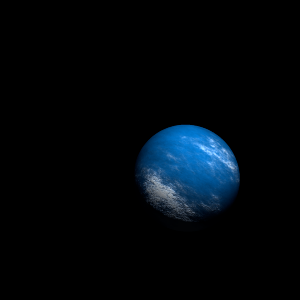|
|
Space Astro
|
Info for exoplanet "Phopal-ripe"
| Scientific (actual) data |
|---|
| Name | Kepler-1373 b |
| Planet status | Confirmed |
| Radius | 0.103 |
| Orbital period | 1.29123 |
| Discovered | 2016 |
| Updated | 2021-02-05 |
| Tconj | 2454960 |
| Publication | Announced on a website |
| Detection type | Primary Transit |
| Alternate names | 2MASS J19030049+3914571 b, K02866.01, KIC 4138951 b, KOI-2866 b, KOI-2866.01, WISE J190300.48+391457.0 b |
| Star name | Kepler-1373 |
| Right ascension | 285.75° |
| Declination | 39.25° |
| Mag j | 13.121 |
| Mag h | 12.853 |
| Mag k | 12.789 |
| Star distance | 1112 |
| Star metallicity | 0.03 |
| Star mass | 1.22 |
| Star radius | 1.33 |
| Star age | 2.51 |
| Star temperature | 6299 |
| Star alternate names | 2MASS J19030049+3914571, KIC 4138951, KOI-2866, WISE J190300.48+391457.0 |
| Wikipedia article | Kepler-1373 b |
Back
| |
| Fictional info (?) |
|---|
| Suggested name | Phopal-ripe |
| Planet type | Cold planet |
| Its orbital period around Kepler-1373 of 1.3 earth days is the longest of all the planets in its solar system. |
| Atmosphere | Ethane | 72% |
| Carbonyl sulfide | 28% |
| Neon | 0.25% |
| Atmospheric pressure | 60 bar |
 |
| No known satellites |
| Google search for Phopal-ripe |
|
Website by Joachim Michaelis
|
|
|
|